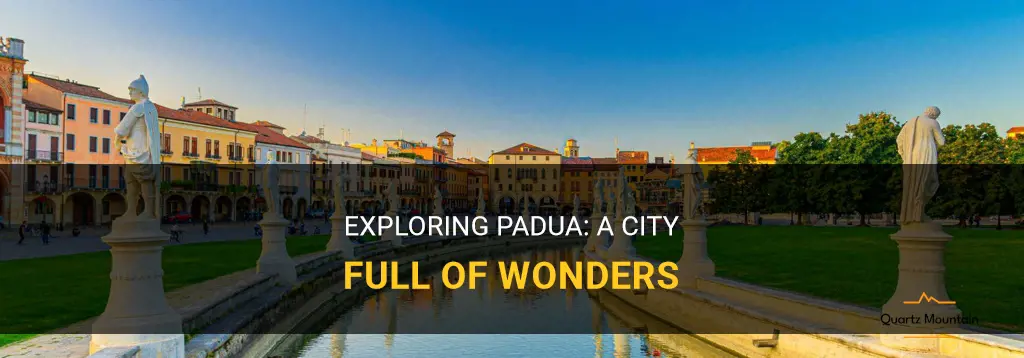
Welcome to Padua, a city full of wonders waiting to be explored! Situated in the northeastern region of Italy, Padua is known for its rich history, stunning architecture, and vibrant cultural scene. From its world-renowned university to its picturesque canals and ancient streets, there is something for everyone to discover in this enchanting city. Whether you are a history buff, an art lover, or simply someone seeking a unique travel experience, Padua has it all. So, grab your walking shoes and get ready to immerse yourself in the magic of this hidden gem.
What You'll Learn
- Prato della Valle - Largest square in Italy
- Scrovegni Chapel - Famous for its frescoes by Giotto
- Basilica of Saint Anthony - Pilgrimage site for Catholics
- University of Padua - One of the oldest universities in the world
- Botanical Garden - UNESCO World Heritage Site
- Palazzo della Ragione - Historic town hall
- Prato della Valle Market - Outdoor market with local produce and goods
- Padua Cathedral - Gothic-style cathedral
- Eremitani Civic Museum - Art museum featuring works by famous artists
- Pedrocchi Café - Historic café known for its architectural beauty and coffee

Prato della Valle - Largest square in Italy
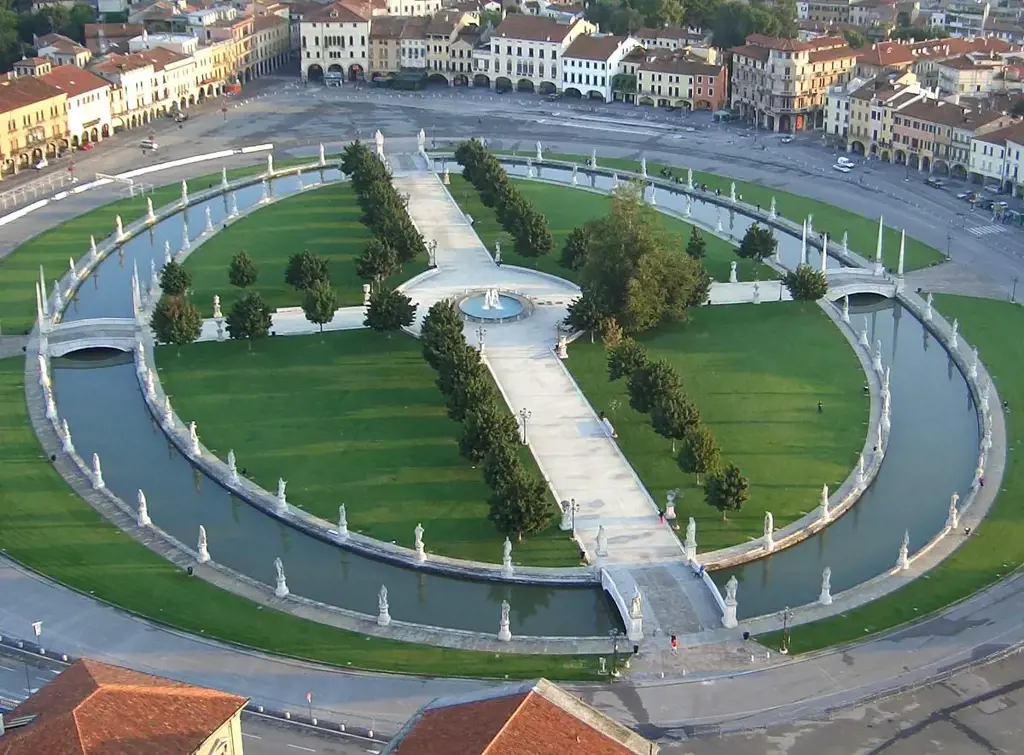
Padua is an enchanting city located in the Veneto region of Italy. One of its most striking features is the Prato della Valle, the largest square in Italy. This beautiful public space is a must-visit destination for tourists and locals alike.
Prato della Valle is situated in the heart of Padua and covers an area of 90,000 square meters. It is a remarkable architectural masterpiece, featuring a central elliptical island surrounded by a canal. The island is adorned with numerous statues of famous figures from Padua's history, adding to the square's grandeur and historical significance.
The square has a vibrant atmosphere and serves as a gathering place for various activities and events throughout the year. Locals often come here for a leisurely stroll, bike ride, or picnic on the well-manicured lawns. Visitors can also enjoy the peaceful ambiance by sitting on one of the many benches and watching people go by.
Prato della Valle is not just a beautiful square; it also holds great historical and cultural value. The square was originally designed in the late 18th century, and its construction was completed in the early 19th century. It was created to replace a medieval marketplace and has since become a symbol of Padua's rich heritage.
One of the most remarkable features of Prato della Valle is the surrounding canal. The canal is lined with 78 statues, each representing a prominent citizen of Padua. These statues add a unique touch to the square and make it a truly remarkable sight to behold.
Visitors to Prato della Valle can also explore the nearby attractions. The Basilica of Saint Anthony, one of the most important religious sites in Italy, is just a short walk away. This stunning church is known for its beautiful artwork and houses the tomb of Saint Anthony, one of the most revered saints in the Catholic Church.
In addition to its historical and cultural significance, Prato della Valle is also a popular destination for shopping and dining. The square is surrounded by a diverse range of shops, boutiques, cafes, and restaurants, offering something for everyone's taste.
Whether you're a history enthusiast, a nature lover, or simply looking for a peaceful place to relax, Prato della Valle is a must-visit destination in Padua. Its grandeur, beauty, and historical significance make it one of Italy's top attractions. So, don't miss the opportunity to experience the charm of this magnificent square when you visit Padua.
12 Romantic Things to Do in Vail: A Guide to Love the Mountains Offer!
You may want to see also

Scrovegni Chapel - Famous for its frescoes by Giotto
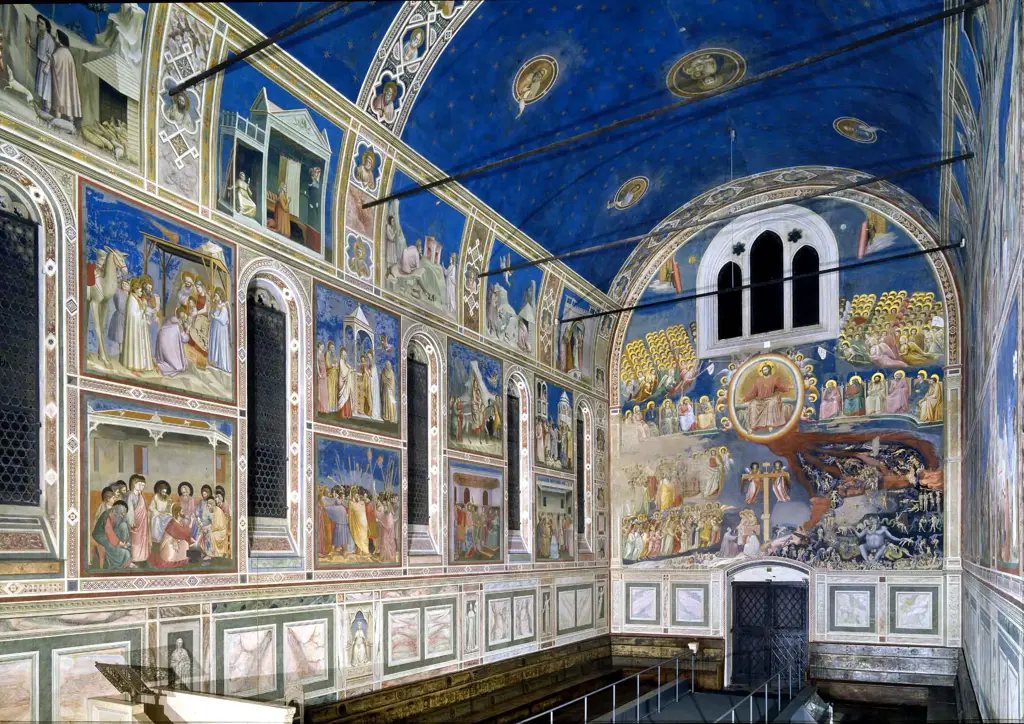
| Characteristic | Description |
|---|---|
| Name | Scrovegni Chapel |
| Type | Chapel in Padua, Italy |
| Website | Go to website |
| Rating / Review count | 4.8 / 12,967 |
| Address | Piazza Eremitani, 8, 35121 Padova PD, Italy |
| Phone | +39 049 201 0020 |
Padua, located in northern Italy, is a charming city known for its rich cultural and historical heritage. One of its most famous attractions is the Scrovegni Chapel, renowned for its stunning frescoes by the renowned artist Giotto.
The Scrovegni Chapel, also known as the Arena Chapel, was commissioned by Enrico Scrovegni in the early 14th century as a private chapel for his family. Construction of the chapel began in 1303 and was completed in 1305. It is located next to the site of a Roman arena, hence its alternate name.
The interior of the chapel is adorned with a series of frescoes by Giotto, considered one of the greatest artists of the early Renaissance. The frescoes depict scenes from the lives of Mary and Jesus, as well as the Last Judgment. Giotto's masterful use of color, perspective, and emotion has made these frescoes some of the most important works of art in the world.
One of the most famous frescoes in the chapel is the Lamentation over the Dead Christ, which depicts Mary and other mourners grieving over the body of Jesus. This painting is known for its emotional impact and realistic portrayal of human suffering. Other notable frescoes include the Annunciation, the Nativity, and the Crucifixion.
The Scrovegni Chapel is not only known for its artistic significance but also for its innovative use of space and lighting. Giotto's careful arrangement of the scenes creates a narrative flow that guides visitors through the chapel. The design of the chapel also incorporates natural light, which adds depth and dimension to the frescoes.
Preserving and protecting the delicate frescoes has been a priority for the city of Padua. In the 20th century, the chapel underwent extensive restoration to repair damage caused by moisture and decay. Today, visitors can appreciate the frescoes in their original splendor, thanks to the careful restoration work.
Visiting the Scrovegni Chapel is a unique and memorable experience that allows visitors to immerse themselves in the beauty of Giotto's artistry. Due to the delicate nature of the frescoes, access to the chapel is limited, and visitors are required to book timed tickets in advance. However, the effort is well worth it, as the chapel offers a glimpse into the skill and creativity of one of Italy's most revered artists.
In addition to the Scrovegni Chapel, Padua has much to offer visitors. The city is home to one of the oldest universities in Italy, the University of Padua, which dates back to 1222. Padua is also known for its beautiful architecture, including the Basilica di Sant'Antonio, a popular pilgrimage site, and the Palazzo della Ragione, an impressive medieval town hall.
Whether you are an art enthusiast or simply want to immerse yourself in the rich history of Italy, a visit to Padua and the Scrovegni Chapel is a must. The combination of Giotto's breathtaking frescoes and the city's cultural offerings make for an unforgettable experience.
10 Exciting Activities to Experience in White Sulphur Springs, WV
You may want to see also

Basilica of Saint Anthony - Pilgrimage site for Catholics
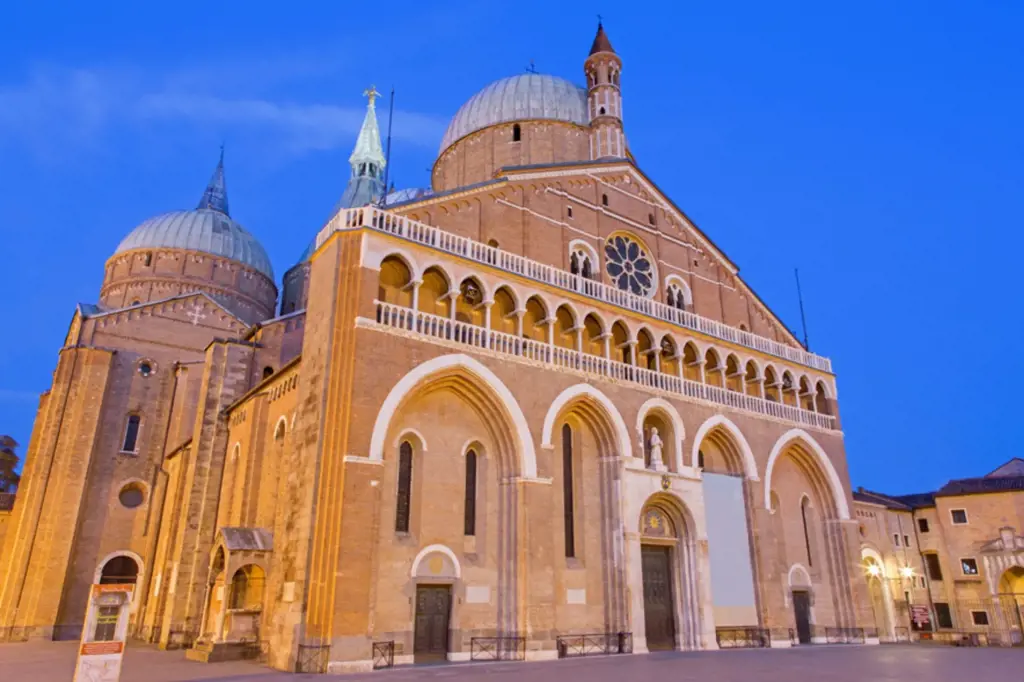
| Characteristic | Description |
|---|---|
| Name | The Basilica of St. Anthony |
| Type | Minor basilica in Padua, Italy |
| Website | Go to website |
| Rating / Review count | 4.8 / 41,110 |
| Address | Piazza del Santo, 11, 35123 Padova PD, Italy |
| Phone | +39 049 822 5652 |
| Profiles |  |
The Basilica of Saint Anthony, located in Padua, Italy, is a significant pilgrimage site for Catholics from all around the world. This magnificent church is dedicated to Saint Anthony of Padua, a highly revered saint known for his miracles and powerful intercession. Pilgrims visit this sacred place to seek spiritual comfort, pray for their intentions, and pay homage to the great Saint Anthony.
The basilica stands as a symbol of devotion and faith, attracting thousands of visitors each year. Its construction began shortly after Saint Anthony's death in 1231 and was completed in the 14th century. The church is a stunning example of Gothic architecture, with its impressive domes, spires, and intricate designs. The striking bronze statues and richly adorned altars captivate the attention of visitors, creating a sense of awe and reverence.
The basilica houses the tomb of Saint Anthony, which is one of the main attractions for pilgrims. His remains are preserved in a beautifully crafted marble reliquary, allowing devotees to pay their respects and offer prayers. Many believers hold deep faith in the miraculous powers of Saint Anthony and come with great hope to receive his intercession in matters of health, protection, and spiritual guidance.
Aside from the tomb, the basilica contains numerous chapels and shrines dedicated to various saints and biblical events. These areas allow pilgrims to reflect, find solace, and deepen their spiritual connection. Among the most renowned chapels is the Chapel of the Relics, which displays a wide range of precious relics associated with Saint Anthony. These relics are considered sacred and are venerated by the faithful.
Another notable feature of the basilica is the Chapel of Saint George, which houses Paolo Uccello's masterpiece, "The Martyrdom of Saint George." This fresco painting is a testament to the renowned artistic heritage of Padua and adds to the overall allure of the basilica.
The Basilica of Saint Anthony also offers pilgrims the opportunity to attend mass, receive the sacraments, and participate in other religious services. Devotees can partake in the celebration of the Holy Eucharist and receive absolution through the sacrament of Confession, strengthening their faith and spiritual journey.
Outside the basilica, the city of Padua itself offers pilgrims a chance to explore its historical and cultural attractions. The city is renowned for its rich history, ancient architecture, and vibrant atmosphere. Pilgrims can visit other religious sites, such as the Scrovegni Chapel with its famous frescoes by Giotto, or simply immerse themselves in the local culture by enjoying authentic Italian cuisine and strolling through the picturesque streets.
In conclusion, the Basilica of Saint Anthony in Padua, Italy, serves as a significant pilgrimage site for Catholics seeking spiritual solace, protection, and intercession from Saint Anthony. Its stunning architecture, sacred relics, and rich history make it a must-visit destination for devotees and tourists alike. The basilica provides a space for prayer, reflection, and religious services, allowing pilgrims to deepen their connection with Saint Anthony and experience the power of faith.
12 Fun Activities in Central MN
You may want to see also

University of Padua - One of the oldest universities in the world
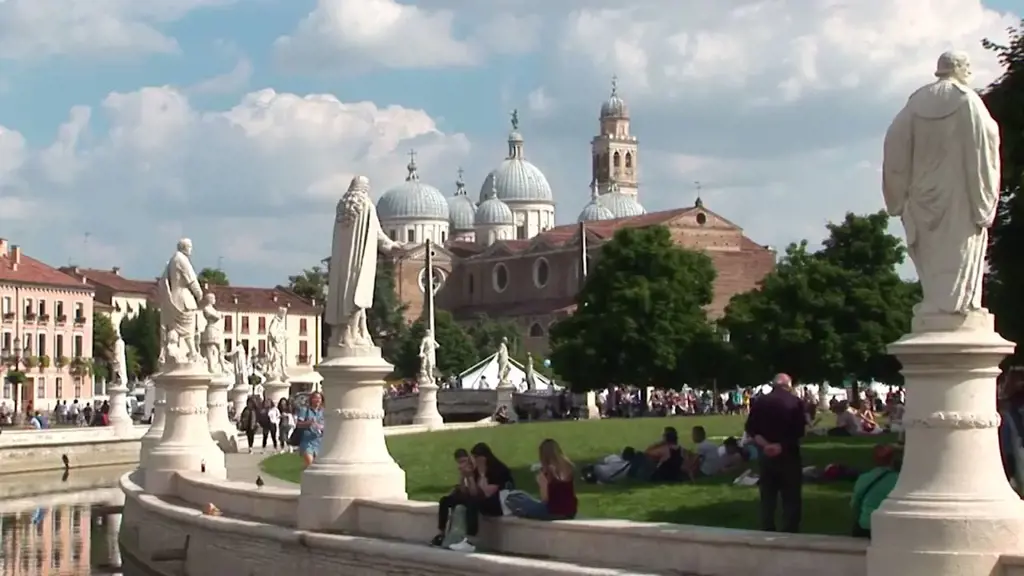
The University of Padua, located in Padua, Italy, is one of the oldest universities in the world, having been established in 1222. With a rich history and impressive academic achievements, the university continues to be a prestigious institution renowned for its excellence in education.
The University of Padua has a long-standing tradition of fostering intellectual growth and innovation. Throughout its centuries-long existence, the university has welcomed many notable scholars and individuals, including Galileo Galilei and Nicolaus Copernicus, who made groundbreaking discoveries in the fields of astronomy and physics. The university's commitment to academic excellence has attracted students from all over the world and has provided them with a comprehensive education rooted in tradition and innovation.
One of the defining features of the University of Padua is its strong emphasis on research and scientific discovery. The university has a wide range of faculties and departments, covering fields such as medicine, law, engineering, humanities, social sciences, and natural sciences. These faculties provide students with a well-rounded education and ample opportunities for further specialization in their respective fields. The university prides itself on nurturing independent and critical thinking among its students, encouraging them to question established knowledge and explore new ideas.
The University of Padua is renowned for its strong connections with industry and society. It actively collaborates with various organizations, both locally and internationally, to facilitate research and promote innovation. These partnerships provide students with opportunities for internships, research projects, and career development, ensuring that they are well-prepared to enter the workforce upon graduation. The university's focus on practical applications of knowledge, combined with its rigorous academic curriculum, enables students to make meaningful contributions to their chosen fields of study.
In addition to its academic achievements, the University of Padua also boasts a vibrant campus life. The university offers a wide range of extracurricular activities and clubs, catering to diverse interests and providing students with opportunities to engage in various social, cultural, and sports activities. These activities encourage students to develop a well-rounded perspective, foster friendships, and create lasting memories during their time at the university.
Furthermore, the University of Padua is located in the beautiful city of Padua, which offers a rich cultural heritage and a welcoming environment for students. With its well-preserved historic center, numerous museums, art galleries, and vibrant culinary scene, Padua provides students with a unique and enriching experience beyond the classroom.
In conclusion, the University of Padua stands as one of the oldest and most prestigious universities in the world. Its commitment to academic excellence, emphasis on research, and strong ties with industry make it a sought-after institution for students looking to pursue a high-quality education. With its vibrant campus life and location in the beautiful city of Padua, the university offers a holistic experience that nurtures both intellectual growth and personal development.
12 Fun Things To Do In Beirut
You may want to see also

Botanical Garden - UNESCO World Heritage Site
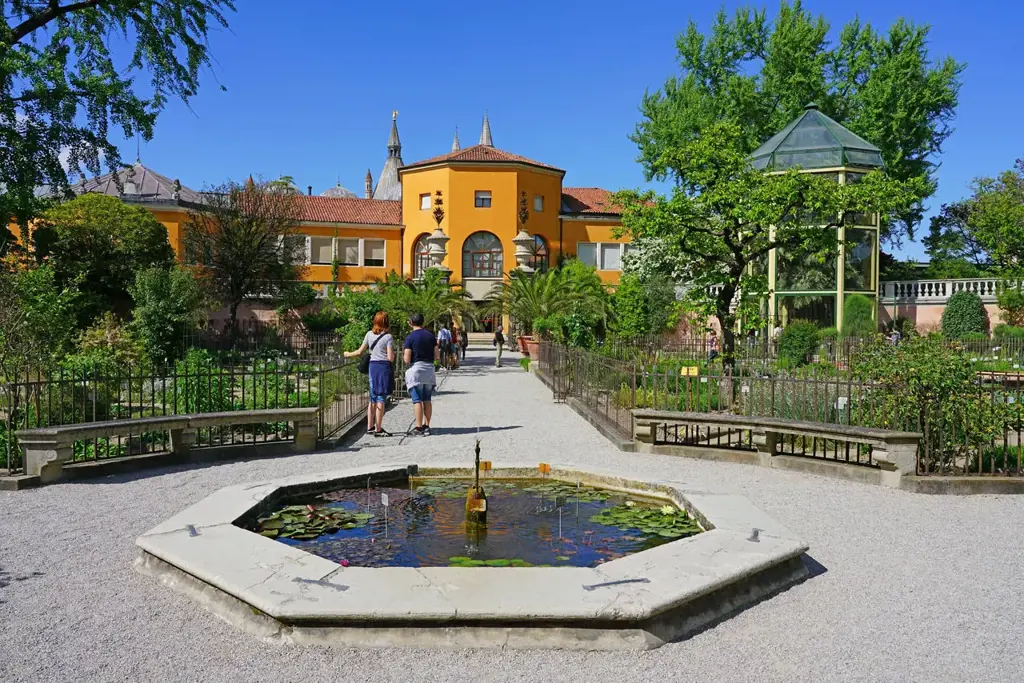
Padua is a charming city located in the Veneto region of Italy. It is renowned for its rich history, stunning architecture, and vibrant culture. One of the most popular attractions in Padua is its Botanical Garden, which holds the prestigious title of UNESCO World Heritage Site.
The Botanical Garden, also known as the Orto Botanico di Padova, was established in 1545, making it the oldest botanical garden in the world that is still in its original location. It was created as a research and teaching facility for the University of Padua, which is one of the oldest universities in Italy.
Covering an area of around 22,000 square meters, the Botanical Garden houses a diverse collection of plant species from all over the world. It serves as a vital resource for botanical research and education, as well as a peaceful oasis for visitors to enjoy.
One of the highlights of the Botanical Garden is its historical significance. Many notable scientists and botanists, including Carl Linnaeus and Padua's most famous alumnus, Galileo Galilei, have studied and conducted research within its grounds. The garden's design reflects the Renaissance ideals of order and symmetry, with geometrically shaped beds and pathways.
The iconic features of the garden include the majestic Palm House, which was constructed in the 1800s and houses a variety of tropical and subtropical plants. Visitors can also explore the beautiful Arboretum, which contains a wide range of trees and shrubs arranged according to their botanical families.
Aside from its impressive plant collections, the Botanical Garden also features several historical buildings and artistic elements. The Botanical Museum displays a vast collection of botanical specimens, while the Library houses a significant collection of scientific literature. There is also a statue of the famous botanist Theophrastus, who is considered the father of botany.
Visiting the Botanical Garden is a unique experience that offers a glimpse into the world of botany and the history of scientific exploration. The garden's serene atmosphere and beautiful surroundings make it an ideal place to relax and enjoy the beauty of nature.
In addition to its scientific and historical importance, the Botanical Garden also plays a crucial role in the conservation of endangered plant species. It actively participates in international conservation programs and contributes to the preservation of global biodiversity.
Overall, the Botanical Garden in Padua, Italy, is a must-see destination for nature lovers, history enthusiasts, and anyone interested in the fascinating world of plants. Its UNESCO World Heritage Site status is a testament to its cultural and scientific significance, making it a truly remarkable place to visit.
12 Fun-filled Things to Do in Cassopolis, MI
You may want to see also

Palazzo della Ragione - Historic town hall
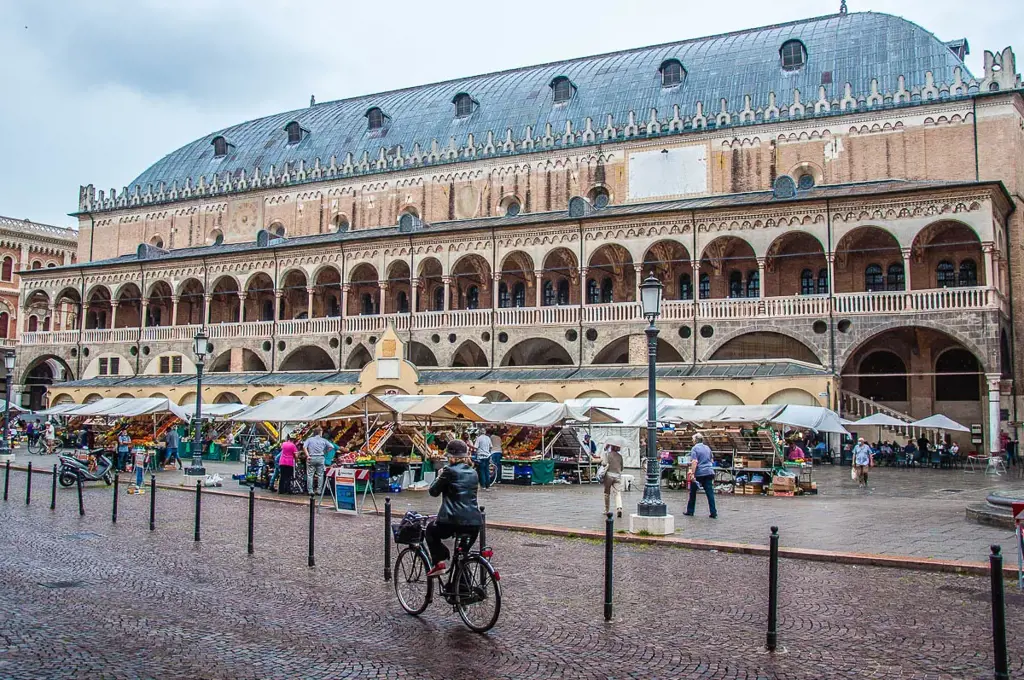
| Characteristic | Description |
|---|---|
| Name | Ragione Palace |
| Type | City hall in Padua, Italy |
| Website | Go to website |
| Rating / Review count | 4.6 / 2,303 |
| Address | Piazza delle Erbe, 35100 Padova PD, Italy |
| Phone | +39 049 820 5006 |
Padua, Italy, is a vibrant city with a rich history. One of the most iconic landmarks in the city is the Palazzo della Ragione, which serves as the historic town hall. This magnificent building has stood for centuries and is a testament to the city's cultural and architectural heritage.
The Palazzo della Ragione is located in the heart of Padua, a city in northeastern Italy. It was originally built in the 13th century and has since undergone various renovations and additions, each showcasing different architectural styles. The building is an architectural marvel, featuring a mix of Gothic, Romanesque, and Renaissance elements.
One of the most striking features of the Palazzo della Ragione is its massive size. The building spans over three floors and covers a vast area, making it one of the largest medieval town halls in Europe. The ground floor is home to a large open-air market, where locals and tourists alike can browse through an array of goods and products.
As visitors enter the Palazzo della Ragione, they are greeted by a stunning staircase that leads to the upper floors. The upper levels house several chambers and rooms, each adorned with beautiful frescoes and intricate decorations. These rooms were historically used for administrative purposes, such as hearings and trials, as well as for public gatherings and ceremonies.
One of the most famous attractions within the Palazzo della Ragione is the Salone, also known as the Hall of Justice. This remarkable space is located on the upper floor and features an impressive vaulted ceiling adorned with intricate paintings. The Salone is often used for cultural events, exhibitions, and concerts, adding to the vibrant ambiance of the building.
In addition to its architectural splendor, the Palazzo della Ragione also holds great historical significance. The building has witnessed numerous important events throughout Padua's history, including political gatherings, legal proceedings, and even the election of the city's officials. It serves as a symbol of the city's past and its ongoing commitment to preserving its heritage.
Today, the Palazzo della Ragione continues to be a popular destination for tourists who want to immerse themselves in the city's rich cultural tapestry. Visitors can explore the building's fascinating history, admire its stunning architecture, and even catch a glimpse of local life in the bustling market on the ground floor.
Overall, the Palazzo della Ragione is a must-visit attraction for anyone traveling to Padua, Italy. Its grandeur, historical significance, and architectural beauty make it a true gem of the city. Whether you are a history buff, an art enthusiast, or simply a curious traveler, a visit to this magnificent town hall will surely leave a lasting impression.
13 Fun Things to Do in La Junta, Colorado
You may want to see also

Prato della Valle Market - Outdoor market with local produce and goods
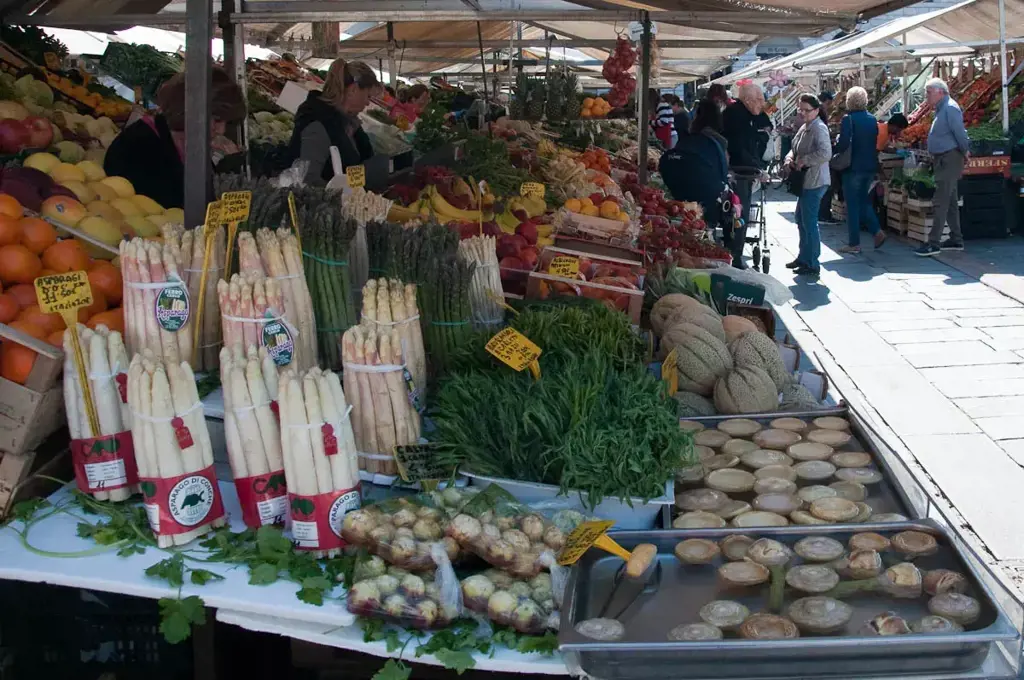
Prato della Valle Market is one of the most popular outdoor markets in Padua, Italy. Located in the historic Prato della Valle square, this market offers a wide range of local produce and goods for both locals and tourists to enjoy.
The market is open every Saturday and Sunday and is a hub of activity. Local farmers and artisans gather here to sell their products, which range from fresh fruits and vegetables to handmade crafts and clothing. Visitors can explore the various stalls, admiring the vibrant colors and aromas of the local produce on display.
One of the highlights of the Prato della Valle Market is the abundance of fresh and organic produce available. Farmers bring their freshly picked fruits and vegetables to the market, ensuring that visitors have access to the highest quality and most flavorful products. From juicy tomatoes to fragrant herbs, there is a wide variety of options to choose from.
In addition to produce, the market also offers a selection of local cheeses, cured meats, and freshly baked bread. These delicacies are perfect for creating a picnic or enjoying a delicious meal at home. Many of the vendors are happy to offer samples, allowing visitors to taste the flavors of Padua before making a purchase.
Apart from food, the Prato della Valle Market is also known for its wide range of arts and crafts. Local artisans showcase their handmade jewelry, ceramics, and textiles, providing visitors with the opportunity to take home a unique and memorable souvenir. Whether it's a hand-painted plate or a hand-knitted scarf, the market is a treasure trove of local talent and craftsmanship.
The market's location in the stunning Prato della Valle square adds to its charm. Surrounded by beautiful statues and fountains, visitors can take a leisurely stroll while browsing the stalls or simply relax on one of the many benches and watch the bustling atmosphere.
Overall, Prato della Valle Market is a must-visit destination for anyone looking to experience the vibrant and diverse flavors of Padua. From fresh produce to handmade crafts, there is something for everyone to enjoy. So, next time you find yourself in Padua, be sure to make a stop at this lively market and immerse yourself in the local culture and flavors.
13 Fun Activities to Enjoy at Lake Jocassee
You may want to see also

Padua Cathedral - Gothic-style cathedral
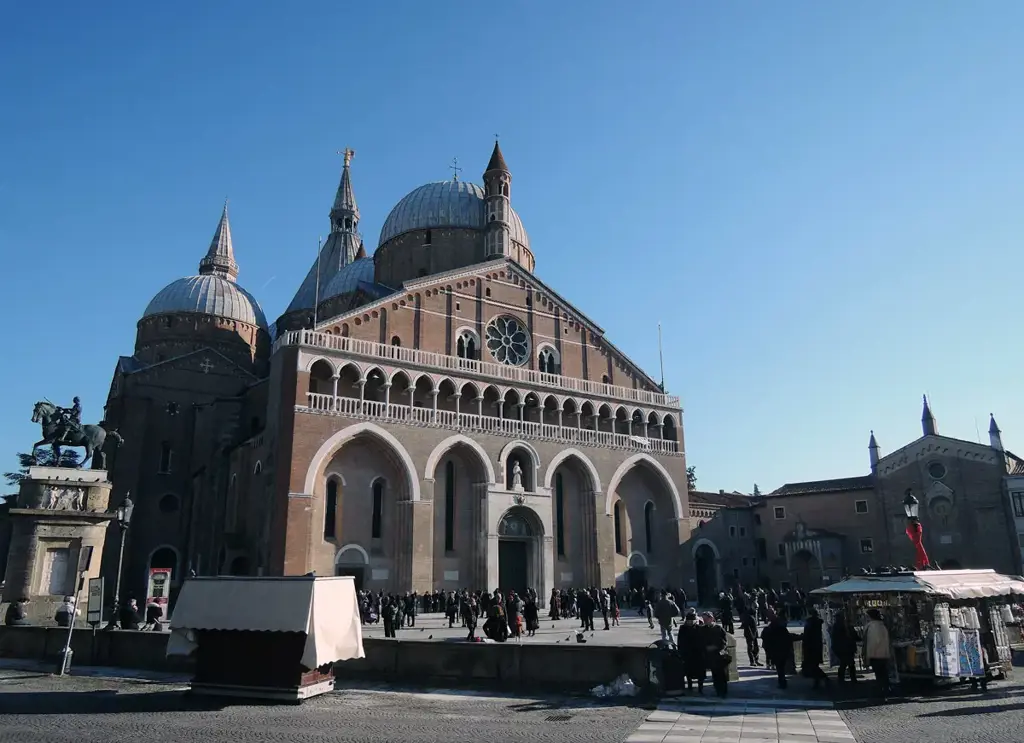
Padua Cathedral, also known as the Cathedral of Santa Maria Assunta, is an impressive Gothic-style cathedral located in the city of Padua, Italy. Built in the 16th century, the cathedral stands as a testament to the rich history and cultural heritage of the city.
The construction of Padua Cathedral began in 1551 and was completed in 1754. The cathedral is dedicated to the Assumption of the Virgin Mary and features a stunning facade adorned with intricate sculptures and beautiful stained glass windows.
One of the most notable features of the cathedral is its tall bell tower, which stands at an impressive height of 75 meters. The bell tower offers visitors panoramic views of the city and is a popular attraction for tourists and locals alike.
Inside the cathedral, visitors will find a grand interior with a nave and two side aisles. The high ceilings and large windows create a sense of grandeur, while the ornate decorations and artwork add to the overall beauty of the space. The cathedral is also home to several chapels, each adorned with its own unique style and dedicated to various saints.
One of the most famous chapels in Padua Cathedral is the Capella del Santo, dedicated to St. Anthony of Padua, the city's patron saint. This chapel contains the saint's tomb, which attracts pilgrims from all over the world who come to pay their respects and seek solace.
Another notable feature of the cathedral is its organ, which dates back to the 19th century. The organ is known for its exceptional sound quality and is still used during religious ceremonies and concerts held within the cathedral.
Padua Cathedral is not only a place of worship but also a symbol of Padua's rich history and cultural significance. The cathedral has witnessed countless historical events and continues to serve as a gathering place for the local community.
Visiting Padua Cathedral provides a unique opportunity to admire the architectural beauty of the Gothic style, experience the spiritual atmosphere, and learn about the city's history and culture. Whether you are a history enthusiast, a religious pilgrim, or simply appreciate fine art and architecture, a visit to Padua Cathedral is an experience not to be missed.
11 Romantic Things to Do in Big Sur for Couples in Love
You may want to see also

Eremitani Civic Museum - Art museum featuring works by famous artists
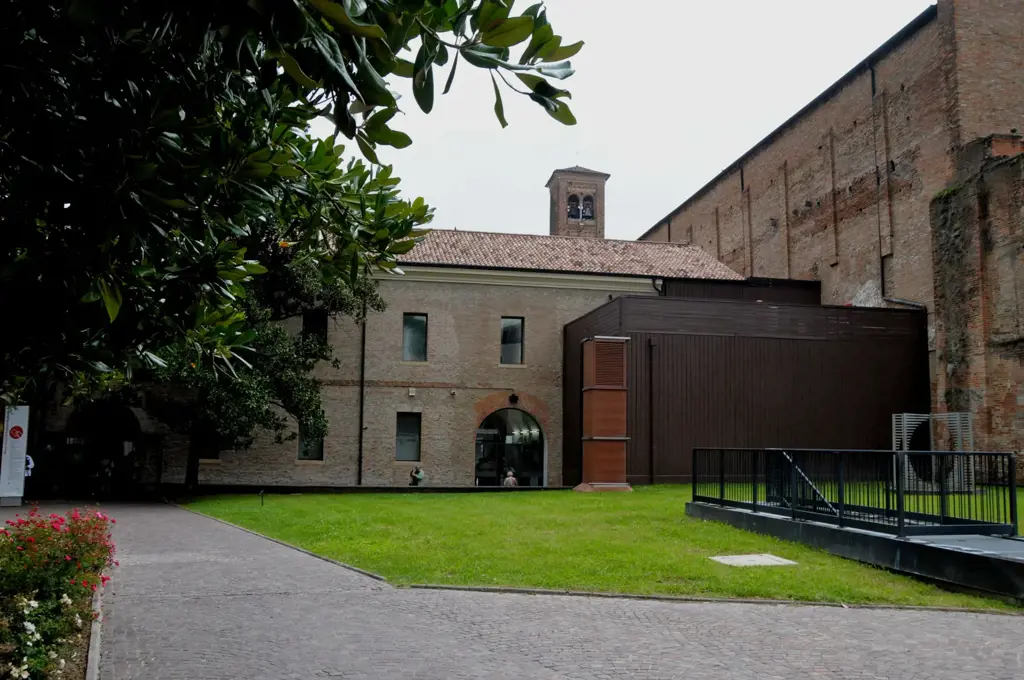
| Characteristic | Description |
|---|---|
| Name | Musei Civici Eremitani |
| Type | Museum in Padua, Italy |
| Website | Go to website |
| Rating / Review count | 4.5 / 1,200 |
| Address | Piazza Eremitani, 8, 35121 Padova PD, Italy |
| Phone | +39 049 820 4551 |
Padua, Italy, is home to many famous attractions and landmarks. One must-visit location in Padua is the Eremitani Civic Museum. This stunning museum is known for its impressive collection of artworks by famous artists.
The Eremitani Civic Museum is situated in the heart of Padua, just a short distance from the city's historic center. It is housed in the former Eremitani Monastery, which was founded in the 13th century. The museum itself was established in 1872 and has been showcasing art to the public ever since.
The museum's collection boasts an array of remarkable artworks spanning various artistic periods. Visitors can admire pieces from the Medieval era all the way to the Renaissance. Some of the most notable works include paintings by renowned artists such as Mantegna, Caravaggio, and Tintoretto.
One of the highlights of the Eremitani Civic Museum is the frescoes collection. The museum is home to some of the best-preserved frescoes in Italy. These stunning paintings adorn the walls and ceilings of the museum, creating a breathtaking atmosphere for visitors. The frescoes depict religious scenes and mythological stories, showcasing the immense talent and skill of the artists who created them.
In addition to the frescoes, the museum also houses a vast collection of sculptures, ceramics, and decorative arts. These pieces offer visitors a glimpse into the rich cultural and artistic history of Padua and its surrounding regions.
Aside from the stunning artworks, the Eremitani Civic Museum is also known for its beautiful architecture. The building itself is a work of art, with its elegant arches and intricate details. The museum's interior is equally impressive, featuring spacious galleries and well-curated exhibitions that are sure to captivate visitors and art enthusiasts.
Visiting the Eremitani Civic Museum is a must for anyone interested in art and culture. The museum provides a unique opportunity to immerse oneself in the world of art and appreciate the incredible talent of some of history's most celebrated artists.
In conclusion, the Eremitani Civic Museum in Padua, Italy, is a true gem for art lovers. Its impressive collection of artworks, stunning frescoes, and beautiful architecture make it a must-visit destination for anyone visiting the city. Whether you are a history enthusiast or simply appreciate the beauty of art, this museum will leave a lasting impression on you.
13 Awesome Things to Do in Holly Springs MS
You may want to see also

Pedrocchi Café - Historic café known for its architectural beauty and coffee
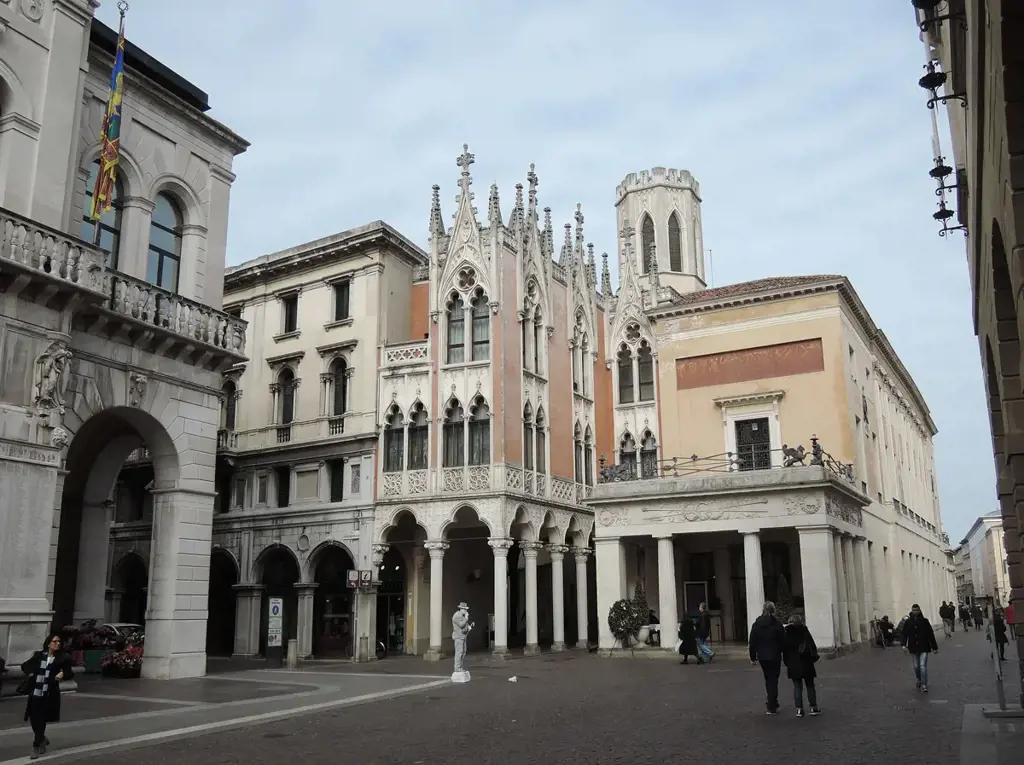
| Characteristic | Description |
|---|---|
| Name | Pedrocchi Café |
| Type | $$$ |
| Website | Go to website |
| Rating / Review count | 4.4 / 8,930 |
| Address | Via VIII Febbraio, 15, 35122 Padova PD, Italy |
| Phone | +39 049 878 1231 |
Padua, Italy is home to a number of historic and cultural landmarks, including the Pedrocchi Café. Located in the heart of the city, the café is known for its architectural beauty and its delicious coffee.
The Pedrocchi Café has a rich history that dates back to the early 19th century. It was opened in 1831 by Antonio Pedrocchi, a businessman and entrepreneur who had a vision of creating a grand café that would attract locals and visitors alike. Pedrocchi spared no expense in designing and decorating the café, which quickly became a popular meeting place for intellectuals, artists, and politicians.
One of the most striking features of the Pedrocchi Café is its unique architectural style. The building itself is a mix of different architectural influences, including neoclassical and Moorish elements. The result is a stunning blend of styles that is both elegant and eclectic. The café's façade is adorned with elaborate decorations and sculptures, showcasing the attention to detail that went into its design.
Inside the café, visitors are greeted by a grand interior that is equally as impressive as the exterior. The main room is lavishly decorated with marble columns, ornate chandeliers, and intricate stucco work. The walls are adorned with beautiful paintings and mirrors, adding to the café's opulent atmosphere. The furnishings are a mix of styles, combining plush velvet chairs, ornate wooden tables, and cozy leather booths.
However, the true star of the Pedrocchi Café is its coffee. The café has a long-standing reputation for serving some of the best coffee in Italy. Visitors can choose from a variety of coffee-based drinks, including espresso, cappuccino, and macchiato. Each cup is made with precision and care, ensuring that every sip is a delight. In addition to coffee, the café also offers an array of pastries and desserts that pair perfectly with a warm cup of java.
The Pedrocchi Café has had its fair share of famous patrons over the years. Artists such as Lord Byron and Stendhal frequented the café, finding inspiration in its elegant surroundings. Politicians and revolutionaries, including Giuseppe Garibaldi and Simón Bolívar, also found solace in the café's cozy corners.
Today, the Pedrocchi Café remains a beloved institution in Padua. It continues to attract locals and tourists who come to admire its architectural beauty, enjoy its delicious coffee, and immerse themselves in the café's vibrant history. Whether you're looking for a place to relax, socialize, or marvel at the beauty of Padua, a visit to the Pedrocchi Café is a must.
12 Fun Nighttime Activities to Experience in Iowa City
You may want to see also
Frequently asked questions
- Padua is renowned for its historic landmarks, such as the Scrovegni Chapel with its beautiful frescoes by Giotto. The Basilica of Saint Anthony is another must-visit, attracting pilgrims from around the world. Other attractions include the Prato della Valle, one of the largest squares in Europe, and the Botanical Garden, the oldest in the world.
- Yes, Padua offers various outdoor activities. For nature lovers, the Riviera del Brenta offers a scenic hiking and cycling route along the Brenta River. The Euganean Hills Regional Park is also nearby, providing opportunities for hiking and horseback riding. Additionally, there are several parks and gardens within the city, such as the Orto Botanico and the Villa Pisani National Museum.
- Padua has a rich cultural heritage, and there are many cultural experiences to enjoy. You can explore the city's museums, such as the Museo del Precinema, which showcases the history of pre-cinema devices, and the Museo di Palazzo Zuckermann, which exhibits a collection of decorative arts. Attending a live performance at the Teatro Verdi or the Teatro dei Rinnovati is also a great way to experience Padua's cultural scene.
- Yes, Padua is conveniently located near several popular day trip destinations. You can visit Venice, which is just a short train ride away, and explore its famous canals, historic buildings, and iconic landmarks like St. Mark's Square and the Rialto Bridge. The beautiful city of Verona, known for its Roman amphitheater and association with Shakespeare's Romeo and Juliet, is also within easy reach. Additionally, you can venture into the countryside and visit the charming towns of Vicenza and Treviso.








3 Comments
Earl Calderon
Pop Panupong
AuthorTobias Castillo